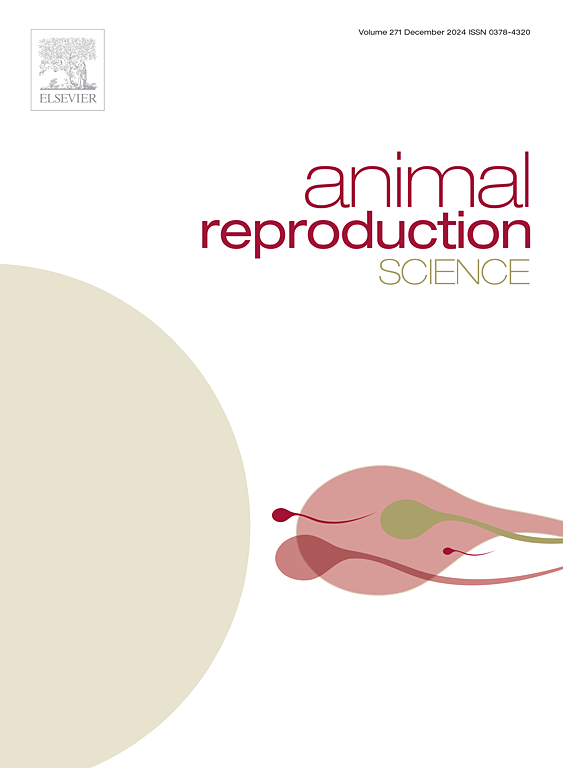Management and reproductive parameters of a captive scarlet ibis (Eudocimus ruber) population at low latitude
IF 3.3
2区 农林科学
Q1 AGRICULTURE, DAIRY & ANIMAL SCIENCE
引用次数: 0
Abstract
Effective captive breeding programs are essential for conserving threatened avian species. This study aimed to describe the breeding performance of a captive population of scarlet ibis over a three-year period (2022, 2023, and 2024). The breeding season varied between July and January over the three years. Both males and females began forming breeding pairs as early as two years old, with the oldest pairing ages being 20 years for males and 12 years for females. Higher enclosure densities appeared to improve laying rates and encourage earlier laying, while a 1:1 male-to-female ratio facilitated effective pair formation with minimal aggression. Egg removal led to an average of 7.6 ± 2.7 replacement lays per female. Advancement of the laying season was significantly associated with increased initial egg weight for Dezember (p < 0.01). The median daily weight loss during incubation was 0.7 % (tau = 0.5), while the mean weight loss on day 21 was 19 ± 2 %. The findings from this study are relevant to enhance the efficiency of breeding programs for the species and may inform breeding strategies for other species within the Threskiornithidae family.
低纬度圈养朱鹮种群管理及繁殖参数研究
有效的圈养繁殖计划对保护濒危鸟类物种至关重要。本研究旨在描述圈养朱鹮种群在三年期间(2022年、2023年和2024年)的繁殖表现。三年的繁殖季节在七月和一月之间变化。雄性和雌性早在两岁时就开始形成交配伴侣,雄性和雌性的最大配对年龄分别为20岁和12岁。较高的圈养密度似乎可以提高产蛋率并促进早期产卵,而1:1的雌雄比例有助于以最小的攻击性有效地形成配对。除卵导致每只雌鸡平均产下7.6个 ± 2.7个替代蛋。产蛋季节的提前与12月初始蛋重的增加极显著相关(p <; 0.01)。孵育期间平均每日体重减轻0.7 % (tau = 0.5),而第21天平均体重减轻19 ± 2 %。本研究结果对提高该物种的育种效率具有重要意义,并可为其他物种的育种策略提供参考。
本文章由计算机程序翻译,如有差异,请以英文原文为准。
求助全文
约1分钟内获得全文
求助全文
来源期刊

Animal Reproduction Science
农林科学-奶制品与动物科学
CiteScore
4.50
自引率
9.10%
发文量
136
审稿时长
54 days
期刊介绍:
Animal Reproduction Science publishes results from studies relating to reproduction and fertility in animals. This includes both fundamental research and applied studies, including management practices that increase our understanding of the biology and manipulation of reproduction. Manuscripts should go into depth in the mechanisms involved in the research reported, rather than a give a mere description of findings. The focus is on animals that are useful to humans including food- and fibre-producing; companion/recreational; captive; and endangered species including zoo animals, but excluding laboratory animals unless the results of the study provide new information that impacts the basic understanding of the biology or manipulation of reproduction.
The journal''s scope includes the study of reproductive physiology and endocrinology, reproductive cycles, natural and artificial control of reproduction, preservation and use of gametes and embryos, pregnancy and parturition, infertility and sterility, diagnostic and therapeutic techniques.
The Editorial Board of Animal Reproduction Science has decided not to publish papers in which there is an exclusive examination of the in vitro development of oocytes and embryos; however, there will be consideration of papers that include in vitro studies where the source of the oocytes and/or development of the embryos beyond the blastocyst stage is part of the experimental design.
 求助内容:
求助内容: 应助结果提醒方式:
应助结果提醒方式:


